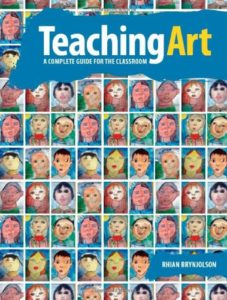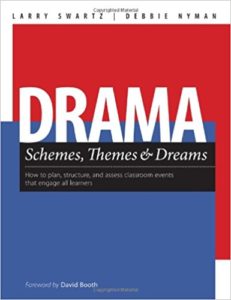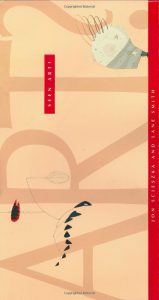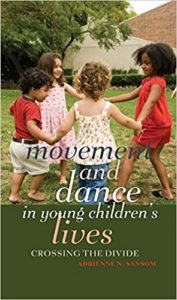Arts education in the schooling curriculum is essential for the emotional and intellectual development of students. The Arts education program in Ontario schools consists of visual arts, drama/theatre, music, and dance. These four strands of the arts program engage the students’ sensory processing skills by stimulating both the mind and body through classroom activities. Through the arts, students are able to explore various forms of self-expression and enhance their creative capabilities. The books featured in this month’s lobby display are aimed at helping students understand the value of arts education in curriculum. For these titles and more, please visit the Lobby Display on the ground floor of the OISE building near the cafe.
Teaching art: A complete guide for the classroom, by Rhian Brynjolson
 Rhian Brynjolson’s Teaching art: A complete guide for the classroom is an all-encompassing written resource for art educators and current and future classroom teachers. The book expands on Brynjolson’s previous work, Art and illustration for the classroom, to include more contemporary methods and theories in art education. This teacher’s guide is divided into six sections, in which five of the sections are written to address a specific artist method used in the classroom. The first section provides keys ideas and principles within art education and provides an overall educational framework for teachers. The remaining five section explores the medium, tools, and techniques used in various art forms such as drawing, sculpture, and graphic design. Brynjolson provides teachers and educators with guidance on how to integrate visual arts into core curriculum, as well as various helpful tips taken from her own experiences as an artist and art educator.
Rhian Brynjolson’s Teaching art: A complete guide for the classroom is an all-encompassing written resource for art educators and current and future classroom teachers. The book expands on Brynjolson’s previous work, Art and illustration for the classroom, to include more contemporary methods and theories in art education. This teacher’s guide is divided into six sections, in which five of the sections are written to address a specific artist method used in the classroom. The first section provides keys ideas and principles within art education and provides an overall educational framework for teachers. The remaining five section explores the medium, tools, and techniques used in various art forms such as drawing, sculpture, and graphic design. Brynjolson provides teachers and educators with guidance on how to integrate visual arts into core curriculum, as well as various helpful tips taken from her own experiences as an artist and art educator.
Drama Schemes, themes & dreams: How to plan, structure, and assess classroom events that engage all learners, by Larry Swartz and Debbie Nyman
 Drama Schemes, themes & dreams, is a collaboration between Dr. Larry Swartz and Debbie Nyman, both of whom have served as instructors at OISE, with a foreword by Professor Emeritus David Booth. The book provides both classroom teachers and theatre/drama educators with guidelines on how to use improvisation and interpretation techniques and strategies in their teaching. The book is divided into eight chapters based on a variety of universal themes that students are familiar with. Each chapter contains a set of activities and exercises for students to engage with and a set of learning opportunities to help teachers and educators plan their lessons. The book aims to help develop students’ capabilities in creativity, critical thinking, and sense-making through strategies that focus on active engagement and collaborative exercises.
Drama Schemes, themes & dreams, is a collaboration between Dr. Larry Swartz and Debbie Nyman, both of whom have served as instructors at OISE, with a foreword by Professor Emeritus David Booth. The book provides both classroom teachers and theatre/drama educators with guidelines on how to use improvisation and interpretation techniques and strategies in their teaching. The book is divided into eight chapters based on a variety of universal themes that students are familiar with. Each chapter contains a set of activities and exercises for students to engage with and a set of learning opportunities to help teachers and educators plan their lessons. The book aims to help develop students’ capabilities in creativity, critical thinking, and sense-making through strategies that focus on active engagement and collaborative exercises.
Seen Art? By Jon Scieszka and Lane Smith
 Seet Art? Is a children’s book that explores the realm of modern art through the artworks collected by the MoMA (Museum of Modern Art). Narrated in the first person, the story captures the journey of its unnamed protagonist who is on the search for his friend called Art. During his search, the protagonist stumbles into various humorous situations at the MoMA where he is confronted by the meaning of art. The book’s illustrator, Lane Smith, features many prominent works of modern art along with his own unique illustrations, such as Vincent Van Gogh, Andy Warhol, Salvador Dali, Pablo Picasso, and others. The book offers an array of visually enticing characters and insights into the meanings behind each artwork. On the literal level, the story revolves around the protagonist’s quest to find his friend Art. However, it also presents a symbolic journey into understanding the meaning behind art, and explores how art is uniquely meaningful for each individual.
Seet Art? Is a children’s book that explores the realm of modern art through the artworks collected by the MoMA (Museum of Modern Art). Narrated in the first person, the story captures the journey of its unnamed protagonist who is on the search for his friend called Art. During his search, the protagonist stumbles into various humorous situations at the MoMA where he is confronted by the meaning of art. The book’s illustrator, Lane Smith, features many prominent works of modern art along with his own unique illustrations, such as Vincent Van Gogh, Andy Warhol, Salvador Dali, Pablo Picasso, and others. The book offers an array of visually enticing characters and insights into the meanings behind each artwork. On the literal level, the story revolves around the protagonist’s quest to find his friend Art. However, it also presents a symbolic journey into understanding the meaning behind art, and explores how art is uniquely meaningful for each individual.
MasterClass in music education: Transforming teaching and learning, by John Finney and Felicity Laurence
 MasterClass in music education: Transforming teaching and learning is part of the MasterClass Series published by Bloomsbury Academic, which explore various topics in music and arts education. The book is a collaborative effort between the editors, Dr. John Finney and Dr. Felicity Laurence, and sixteen practising music teachers. Each chapter is a reflection on the writer’s teaching experiences and relevant scholarly literature. The contributing writers provides readers with insights on the research and methodologies behind music education. Divided into seventeen chapters, the book explores a variety of topics related to the theoretical and practical aspects of music education.
MasterClass in music education: Transforming teaching and learning is part of the MasterClass Series published by Bloomsbury Academic, which explore various topics in music and arts education. The book is a collaborative effort between the editors, Dr. John Finney and Dr. Felicity Laurence, and sixteen practising music teachers. Each chapter is a reflection on the writer’s teaching experiences and relevant scholarly literature. The contributing writers provides readers with insights on the research and methodologies behind music education. Divided into seventeen chapters, the book explores a variety of topics related to the theoretical and practical aspects of music education.
Movement and dance in young children’s lives: Crossing the divide, by Adrienne N. Sansom
 In Movement and dance in young children’s lives: Crossing the divide, Dr. Adrienne N. Sansom stresses the importance of dance, play, and movement in the physical and mental development of young children. Sansom challenges some existing notions held by many early childhood educators, and argues that by encouraging young children to move and dance, they will become familiar with modes of self expression that are not solely linguistic. The book is comprised of eight chapters that examines dance through an educational lens, such as the physical/mental benefits of dance, cultural relevance, and dance in the classroom. Drawing from the author’s own research and existing relevant literature, the book provides a compelling view on the role of dance and movement in early childhood education.
In Movement and dance in young children’s lives: Crossing the divide, Dr. Adrienne N. Sansom stresses the importance of dance, play, and movement in the physical and mental development of young children. Sansom challenges some existing notions held by many early childhood educators, and argues that by encouraging young children to move and dance, they will become familiar with modes of self expression that are not solely linguistic. The book is comprised of eight chapters that examines dance through an educational lens, such as the physical/mental benefits of dance, cultural relevance, and dance in the classroom. Drawing from the author’s own research and existing relevant literature, the book provides a compelling view on the role of dance and movement in early childhood education.
